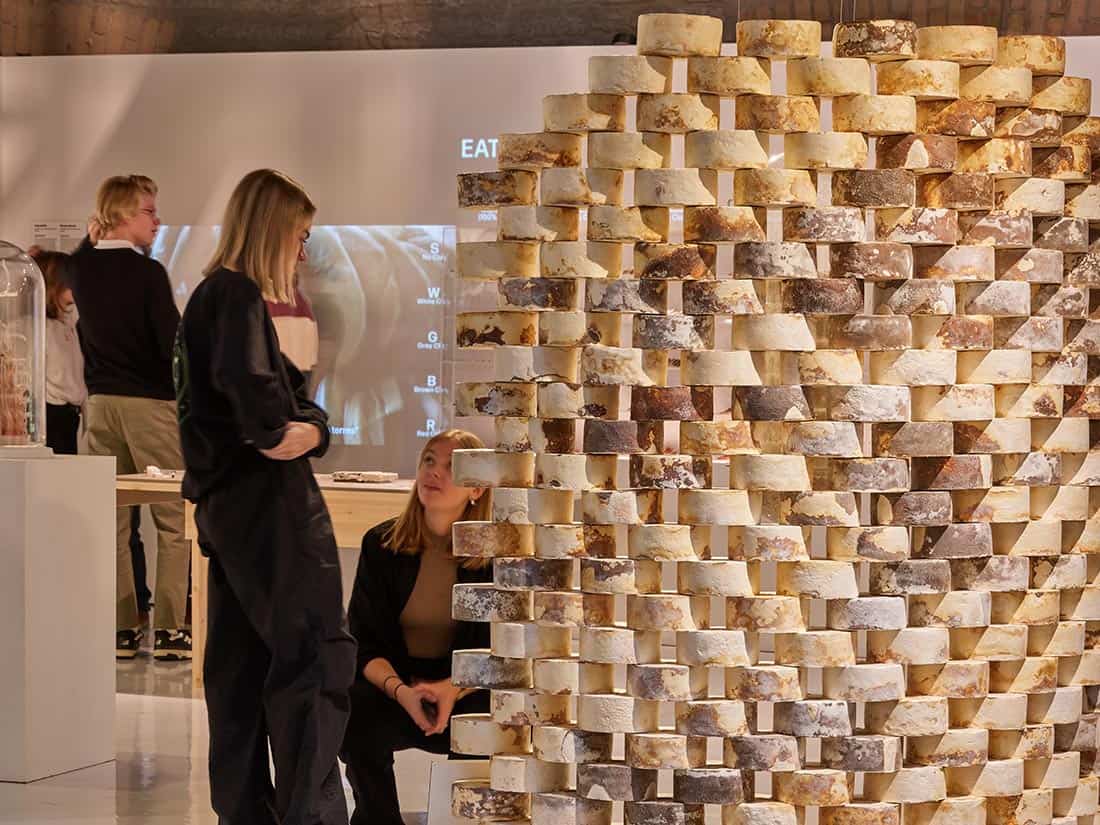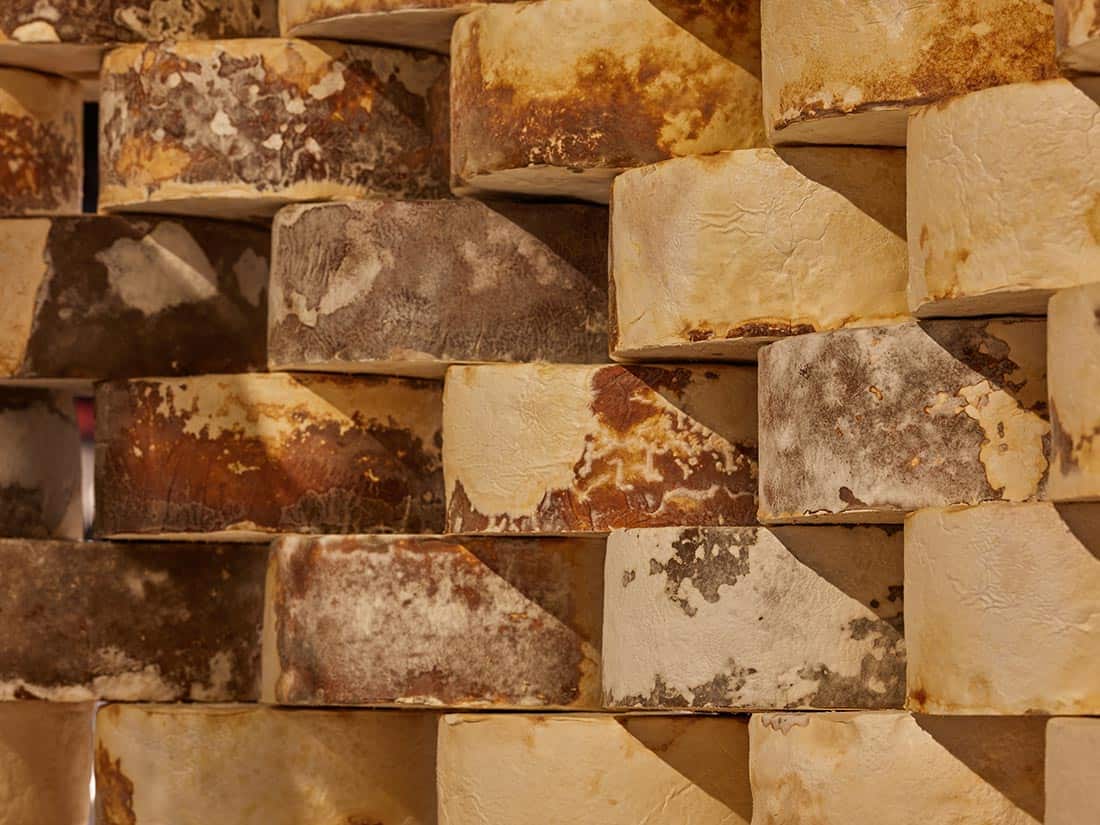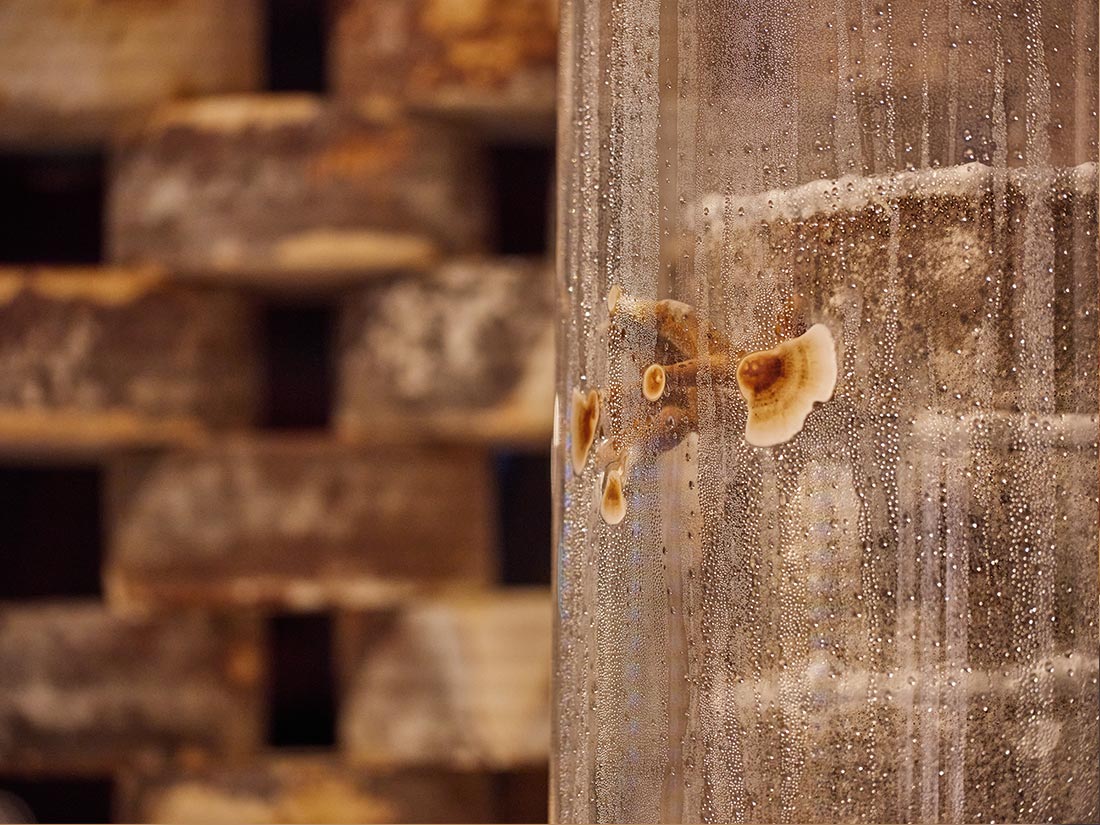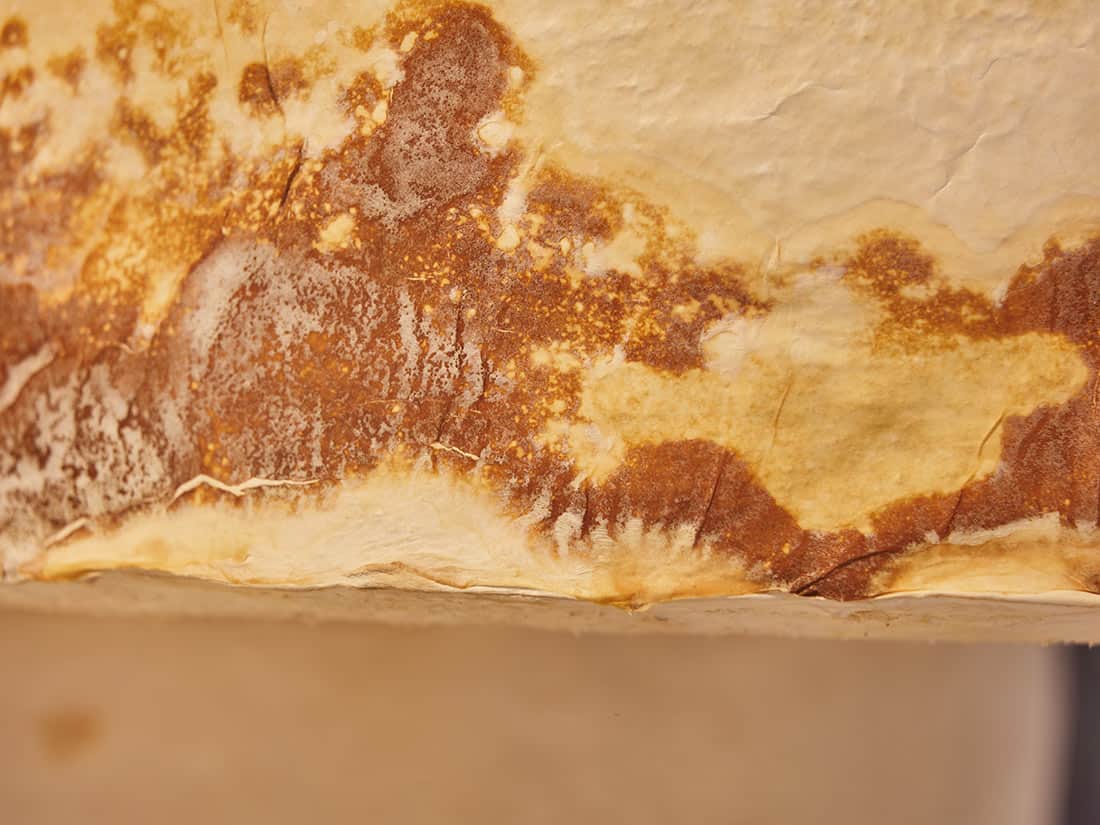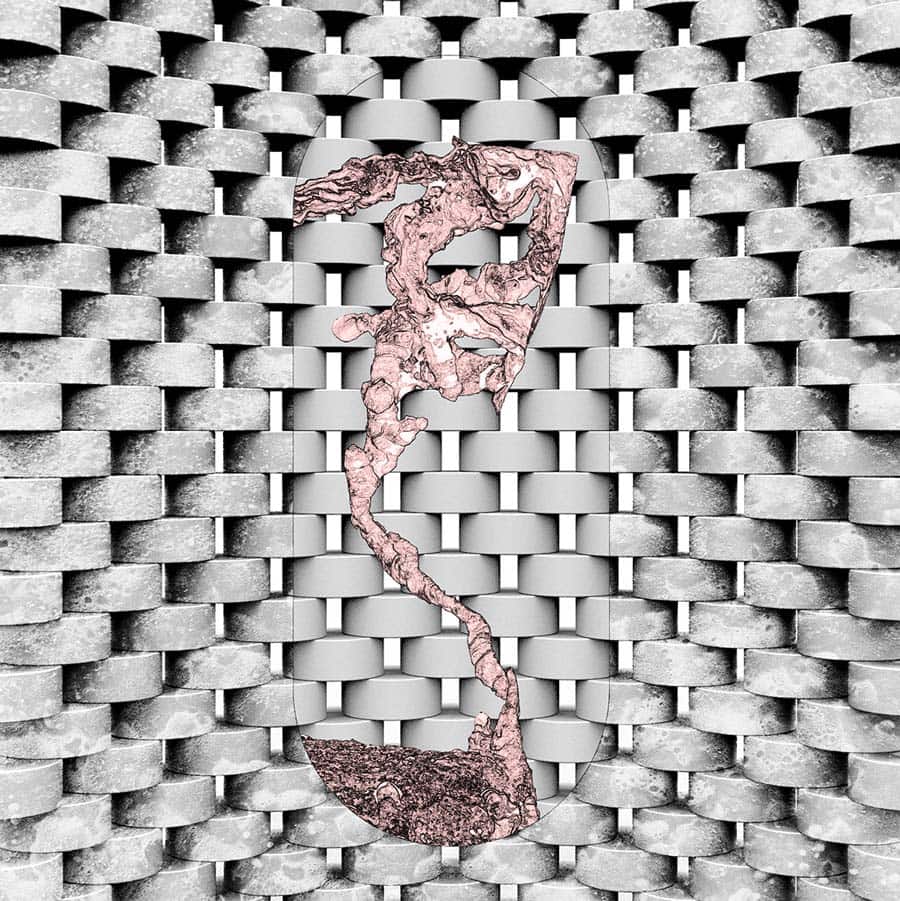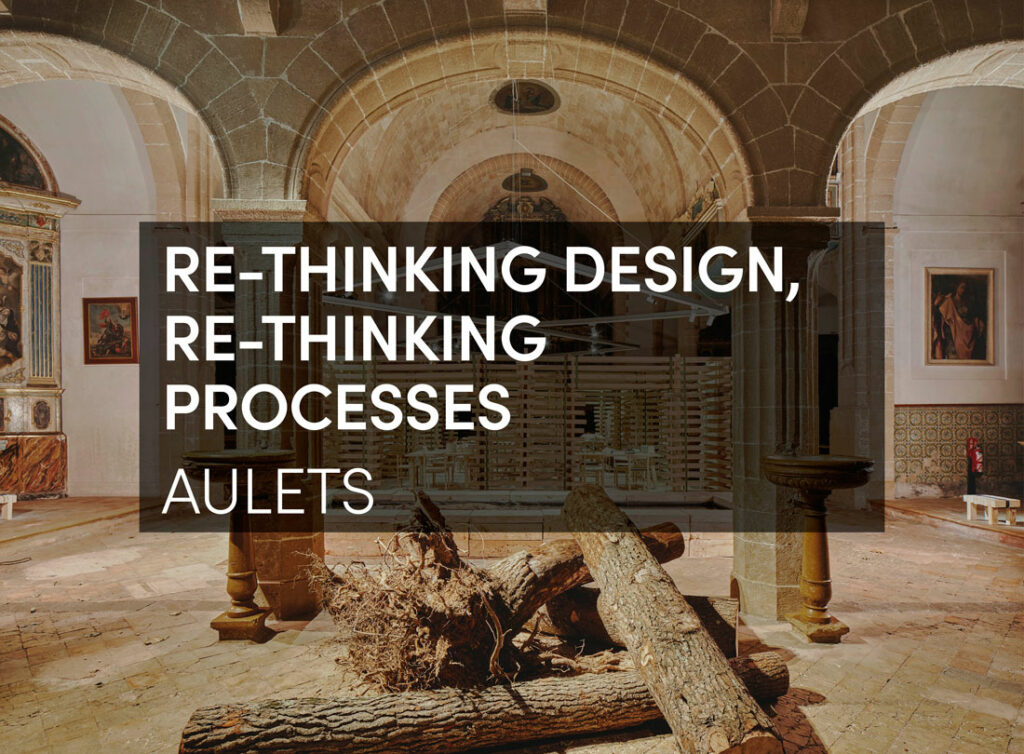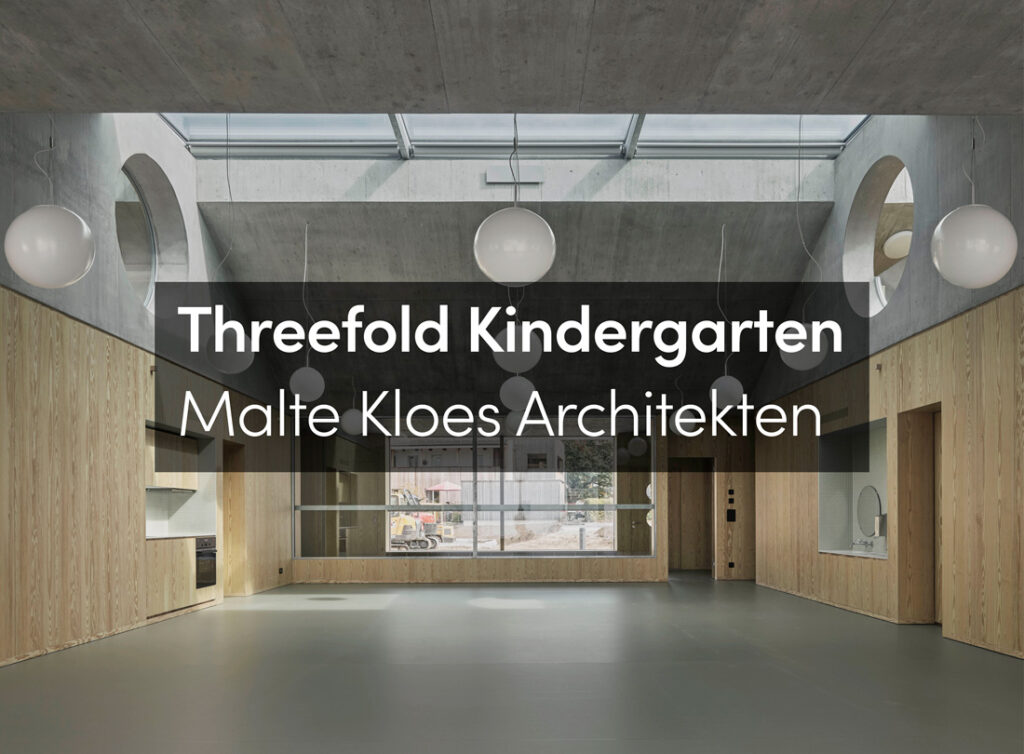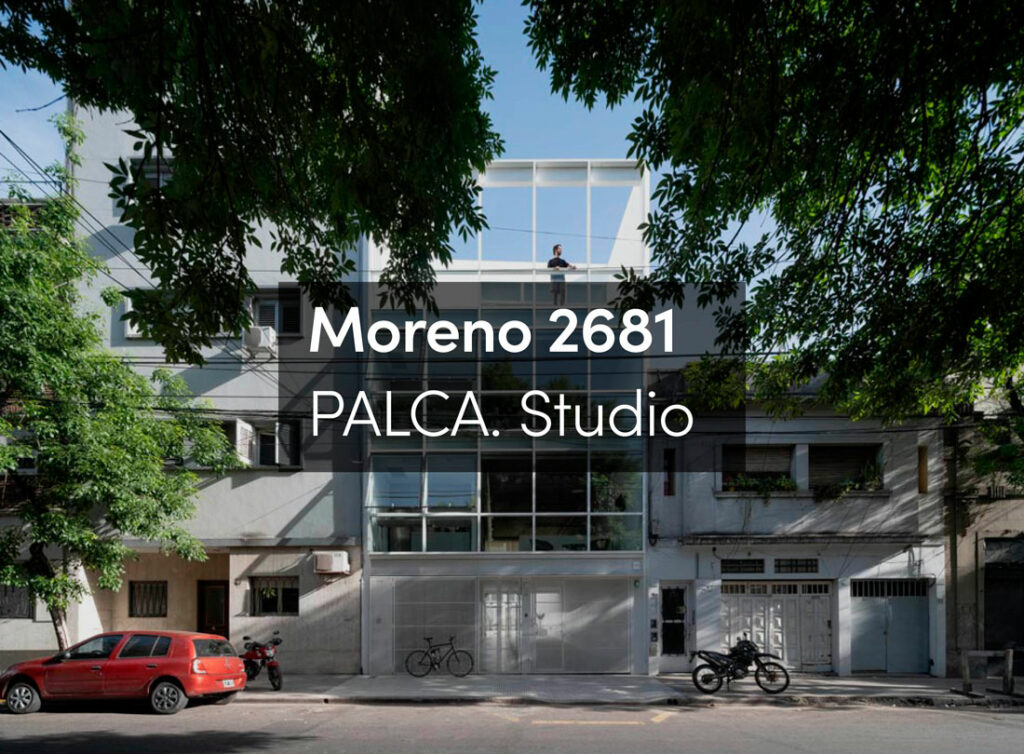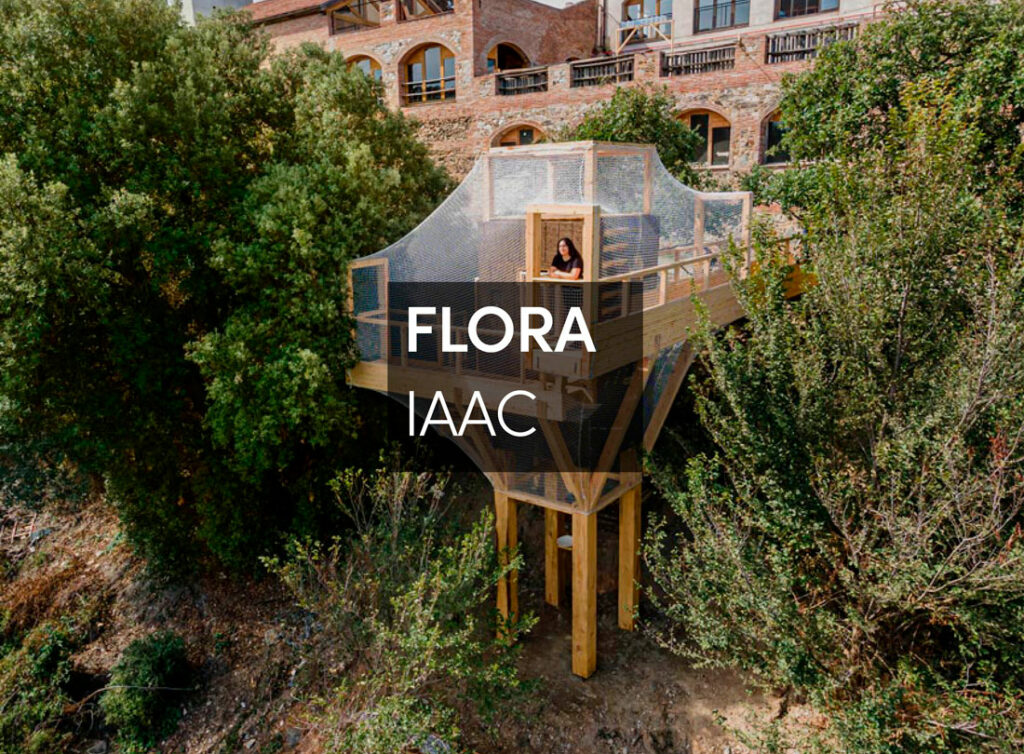The cult of growth is pushing towards constant progress, strongly influencing the environment and its mechanisms. As in nature, growth symbolizes life and therefore could be seen as a natural quality inherent in development. But in natural systems, growth also needs to be balanced with decay, which provides the nutrients for new energy. Instead, decay is stigmatized and hidden, while excessive growth in dense centers demands increasingly more resources.
The providing areas are depleted since they don’t get anything in return. The circle of material flow is broken. A rift has been torn into society’s natural metabolic system.[1]
Decay is essential for healthy progress, forming a continuous, interdependent cycle with growth. Organisms that look at decay as a possibility for life keep that cycle going. Fungi are the main beings responsible for continuous transformation. They are the interface organism, bridging life with death and death with life.[2]
Growing while decomposing, fungi keep the infinite transition from matter to nutrients in motion. This biological process has recently been adopted by humans to grow materials.
Mycelium, the root system of fungi, is used to thread together various organic byproducts, resulting in solid materials. These materials can seamlessly return to the cycle of growth and decay, becoming nutrients after their use.
